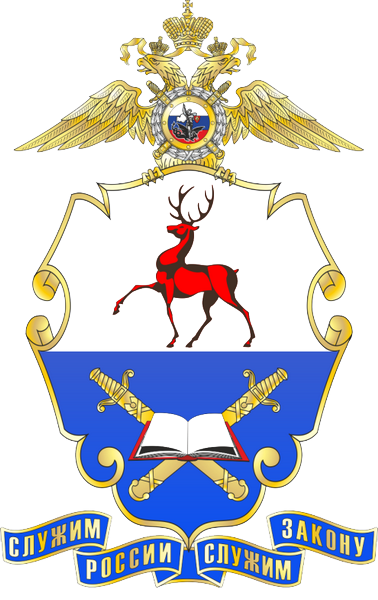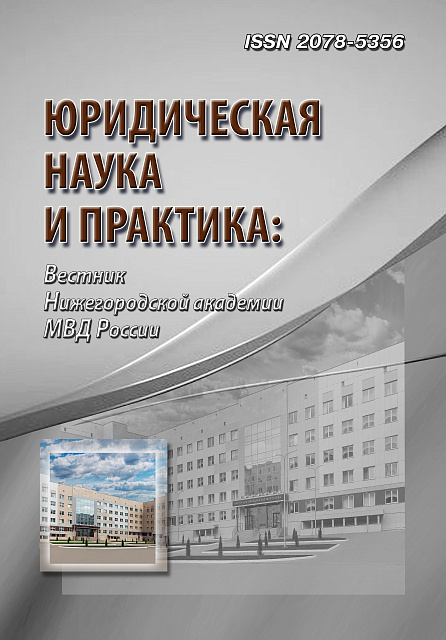The article considers the development of information units of the Russian Ministry of Internal Affairs system from the beginning of the 20th century to the present day. It describes the value of knowledge obtained and accumulated by the information units of the Russian Ministry of Internal Affairs system from a criminological point of view. At the same time, the authors note the absence of a purpose for using the obtained data (information on the identity of the criminal; identity of the victim; traces of the crime; stolen property, etc.) and crime prevention in the said units. It is noted that the lack of a unified approach to developing crime prevention measures both in the country and in its individual entities does not allow for the effective use of the acquired knowledge. The article indicates that today in the Russian Federation there are various databases containing information on the identities of criminals, identities of victims, traces of crimes, stolen property, real estate, transport, mobile phone numbers, etc., which allow identifying the causes and conditions for committing crimes, however, their use is ineffective due to the lack of specific units engaged in developing crime prevention measures in the Russian Federation and its individual entities. The authors of the article say that it is necessary to pay attention to the specifics of crime in a particular region, area, or locality, on the basis of which a unified crime prevention program in a given area should be developed. When developing a unified crime prevention program in a region, special attention should be paid not only to the actions of special entities aimed at combating crime, but also to the role and tasks of state bodies, local governments, public associations and citizens in implementing these measures. Thus, the crime prevention program will be a “road map” developed by the information units of the Russian Ministry of Internal Affairs with the participation of local governments, taking into account the opinion of residents of a given municipality or subject of the Russian Federation, on the territory of which the implementation of this crime prevention program will be provided, which will certainly contribute to increasing the effectiveness of crime prevention and will allow citizens of the Russian Federation to exercise their right, enshrined in Part 1 of Article 32 of the Constitution of the Russian Federation, to their direct participation in managing state affairs - protecting society from criminal encroachments.
crime, the identity of the criminal, causes of crime, crime prevention, crime prevention programs
1. Reforms of Peter I: collection of documents / comp. by V. I. Lebedev. Moscow: State Social-Economic Publishing House, 1937. 379 p. (In Russ.)
2. Isaev M. A. History of the Russian State and Law: textbook. Moscow: Statut, 2012. 838 p. (In Russ.)
3. Shcherbakova L. M. Female violent crime in modern Russia: criminological problems. Dissertation... doctor of legal sciences, 2008. 59 p. (In Russ.)
4. Lopashenko N. A. Murders: monograph. Moscow: Yurlitinform Publ., 2013. 540 p. (In Russ.)
5. Yakovlev D. Yu. Crimes against life committed by women and their prevention. Saratov, 2016. 213 p. (In Russ.)
6. Vikhlyaev A. A., Kalinina S. V. Priority areas of activity and main elements of information and analytical work of the units of the State Information and Analytical Center of the Ministry of Internal Affairs of Russia in the context of digitalization of internal affairs bodies. Scientific portal of the Ministry of Internal Affairs of Russia, 2023, no. 1 (61), pp. 43–48. (In Russ.)
7. Kalashnikov O. D., Shaposhnikov E. L. Internal affairs bodies as one of the main subjects of executive power in the field of crime prevention. Legal science and practice: Journal of the Nizhny Novgorod Academy of the Ministry of Internal Affairs of Russia, 2019, no. 1 (45), pp. 298–299. (In Russ.)
8. Shaw M. Handbook on the Crime Prevention Guidelines. New York, 2010. 124 p. (In Russ.)
9. Pablo Madriaza, Ariane de Palacio. 6th International Report on the Prevention of Criminality in Security. Quebec, 2018. 174 p. (In Russ.)
10. Vanichkin D. E. Criminological Characteristics and Crime Prevention in the Region (Based on Materials from the Stavropol Territory). Dissertation... candidate of legal sciences. Stavropol, 2004. 179 p. (In Russ.)
11. Kosarev V. N., Kosareva L. V., Makogon I. V. Program-targeted Approach to the Prevention of Recidivism. Law and Right, 2009, no. 10, pp. 84–85. (In Russ.)
12. Suslova G. N. Regional Comprehensive Programs to Strengthen the Fight against Crime: Theoretical Aspects of Development and Implementation Mechanism (Based on Materials from the Central Federal District). Dissertation... candidate of legal sciences. Moscow, 2004. 235 p. (In Russ.)
13. Sheriev A. M. Organization of crime prevention in the constituent entities of the Russian Federation. Legal Bulletin of DSU, 2015, vol. 13, no. 1, pp. 104–108. (In Russ.)
14. Tompson L., Steinbach, R., Johnson, S. D. etal. Absence of Street Lighting May Prevent Vehicle Crime, but Spatial and Temporal Displacement Remains a Concern. J Quant Criminol 39.2023. P. 603–623 (In Engl.)
15. Build-Gil D., Moretti A., Langton S. H. The accuracy of crime statistics: Assessing the impact of police data bias on geographic crime analysis. Journal of Experimental Criminology, 2021, pp. 515–541. (In Russ.)
16. Kravchenko I. O., Koryagina S. A. Criminal policy in the field of ensuring migration and environmental security: problem statement. All-Russian Criminological Journal, 2022, vol. 16, no. 5, pp. 566–579. (In Russ.)
17. Minster M. V., Kuznetsova M. V. Juvenile delinquency: current trends and measures to prevent it. Baikal Research Journal, 2023, vol. 14, no. 2, pp. 743–752. (In Russ.)
18. Efremova O. S. Problems of program-targeted planning of crime prevention at the level of constituent entities of the Russian Federation and ways to solve them. Man: crime and punishment, 2015, no. 3 (90), pp. 135–140. (In Russ.)
19. Evlanova O. A., Koimshidi G. F. Criminological problems of crime prevention — some research results. Monitoring of law enforcement, 2014, no. 3, pp. 25–29/ (In Russ.)
20. Donohue J. J. Understanding the Time Path of Crime. Journal of Criminal Law and Criminology, 1998, vol. 88, no. 4, pp. 1423–1451. (In Russ.)













